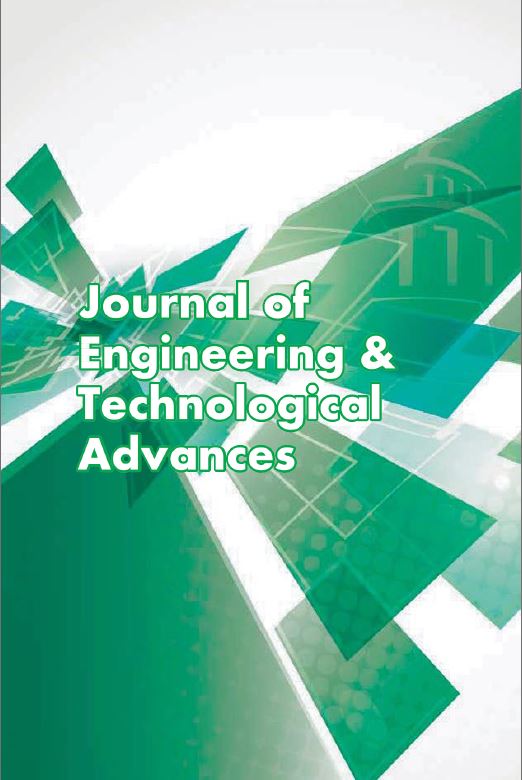Abstract
Aerospace industries globally have considered fibre composites as substitutes for structural applications. There is gross challenge to analyse and evaluate the performance of different fibre composites and their manufacturing processes to determine the most effective, efficient and sustainable material for aircraft structures. Therefore, in order to reduce drag in flight, the material for the structure is an important factor to consider in designing aircrafts. In this study, woven E-glass fibre/natural sisal fibre hybrid composite was developed and their mechanical properties, such as flexural strength, tensile strength and impact strength were evaluated. The flexural test results showed that hybrid composite samples (GF30SF5 and GF30SF10), each with an equal amount of glass fibre (30 wt%), exhibited high flexural strength (108.9 MPa and 124.6 MPa) and flexural modulus (2863 MPa and 2667.6 MPa) compared to the SF15 (41.3 MPa and 1771.8 MPa). For the tensile properties, GF30SF5 had the higher tensile strength (118.76 MPa) and Young’s modulus (565.5 MPa) compared to the SF15, while GF30SF10 had the best elongation at break (36%) among the composite samples. As for the impact properties, GF30SF10 had the highest impact energy (11.5 J) and maximum impact strength (0.18 J/mm2) compared to the GF30 and the SF15 samples. Overall, hybridization enhances mechanical properties, with glass fibre showing superior flexural and tensile characteristics. These findings have implications for the development of stronger and more reliable hybrid composites, especially in aircraft structures like wing components. Hybridization is an important replacement for synthetic materials in aerospace application due to their biodegradability, cost-effectiveness and recyclability making them useful in various applications.
References
Asim, M., Jawaid, M., Abdan, K., Ishak, M. R., & Alothman, O. Y. (2018). Effect of hybridization on the mechanical properties of pineapple leaf fiber/kenaf phenolic hybrid composites. Journal of Renewable Materials, 6(1), 38-46.
Asyraf, M. R. M., Ilyas, R. A., Sapuan, S. M., Harussani, M. M., Hariz, H. M., Aiman, J. M., Baitaba, D. M., Sanjay, M. R., Ishak, M. R., Mazlan, N., Sharma, S., Alam, M. A., & Asrofi, M. (2022). Advanced composite in aerospace applications: opportunities, challenges, and future perspective. Advanced Composites in Aerospace Engineering Applications, 471-498.
Atmakuri, A., Palevicius, A., Vilkauskas, A., & Janusas, G. (2020). Review of hybrid fiber based composites with nano particles—material properties and applications. Polymers, 12(9), 2088.
Awode, E. I., Amankwah, S., Mbada, N. I., & Omiogbemi, I. M. B. (2024). Simulating lightning effects on carbon fiber composite shielded with carbon nanotube sheets using numerical methods. Heliyon, 10(8).
Davies, G. A. O. (1996). Aircraft structures. The Aeronautical Journal, 100(1000), 522-529.
Faraj, R. H., Ahmed, H. U., & Sherwani, A. F. H. (2022). Fresh and mechanical properties of concrete made with recycled plastic aggregates. In Handbook of sustainable concrete and industrial waste management (pp. 167-185). Woodhead Publishing.
Flynn, J., Amiri, A., & Ulven, C. (2016). Hybridized carbon and flax fiber composites for tailored performance. Materials & Design, 102, 21-29.
Gupta, M. K., Srivastava, R. K., Kumar, S., Gupta, S., & Nahak, B. (2015). Mechanical and water absorption properties of hybrid sisal/glass fibre reinforced epoxy composite. American Journal of Polymer Science & Engineering, 3(2), 208-219.
Haider, M. F., & Yasmeen, F. (2018). Multi-Physics Applications of Carbon Fiber Composite Materials: A Summary Review. Physics Letters, 83(14), 2928-2930.
Hashmi, S. A. R., Naik, A., Chand, N., Sharma, J., & Sharma, P. (2011). Development of environment friendly hybrid layered sisal–glass–epoxy composites. Composite Interfaces, 18(8), 671-683.
Kausar, A. (2019). Advances in carbon fiber reinforced polyamide-based composite materials. Advances in materials science, 19(4), 67-82.
Madhuri, K. S., & Rao, D. H. R. (2014). An investigation of mechanical and thermal properties of reinforced sisal-glass fibers epoxy hybrid composites. International Journal of Engineering Research, 2319, 6890.
Mandal, T., Edil, T. B., & Tinjum, J. M. (2018). Study on flexural strength, modulus, and fatigue cracking of cementitiously stabilised materials. Road Materials and Pavement Design, 19(7), 1546-1562.
Nurazzi, N. M., Khalina, A., Sapuan, S. M., & Rahmah, M. (2018). Development of sugar palm yarn/glass fibre reinforced unsaturated polyester hybrid composites. Materials Research Express, 5(4), 045308.
Pappu, A., Pickering, K. L., & Thakur, V. K. (2019). Manufacturing and characterization of sustainable hybrid composites using sisal and hemp fibres as reinforcement of poly (lactic acid) via injection moulding. Industrial Crops and Products, 137, 260-269.
Park, C., Kim, G., Jung, J., Krishnakumar, B., Rana, S., & Yun, G. J. (2020). Enhanced self-healing performance of graphene oxide/vitrimer nanocomposites: A molecular dynamics simulations study. Polymer, 206, 122862.
Ramesh, B., Eswari, S., & Sundararajan, T. (2021). Experimental and numerical studies on the flexural behaviour of GFRP laminated hybrid-fibre-reinforced concrete (HFRC) beams. Innovative Infrastructure Solutions, 6, 1-13.
Sapuan, S. M., Aulia, H. S., Ilyas, R. A., Atiqah, A., Dele-Afolabi, T. T., Nurazzi, M. N., Supian, A. B. M., & Atikah, M. S. N. (2020). Mechanical properties of longitudinal basalt/woven-glass-fiber-reinforced unsaturated polyester-resin hybrid composites. Polymers, 12(10), 2211.
Soutis, C. (2005). Fibre reinforced composites in aircraft construction. Progress in aerospace sciences, 41(2), 143-151.
Suresh, G. (2020). Influence of glass fiber hybridization on mechanical characteristics of sisal fibre reinforced composite material. International Journal of Mechanical and Production Engineering Research and Development.

This work is licensed under a Creative Commons Attribution-NonCommercial-NoDerivatives 4.0 International License.
Copyright (c) 2024 Array

